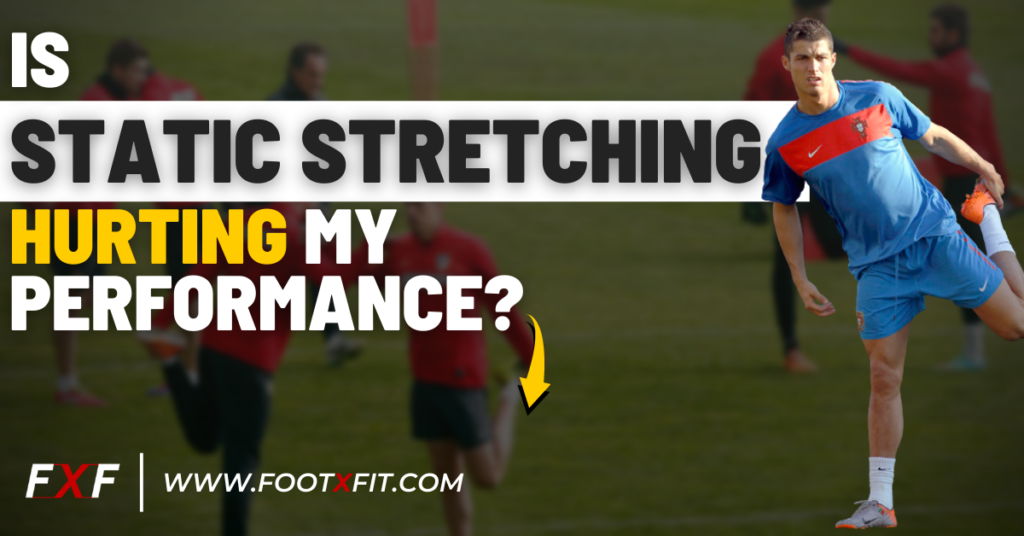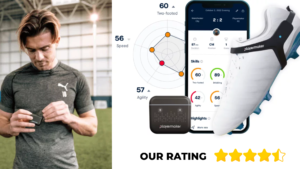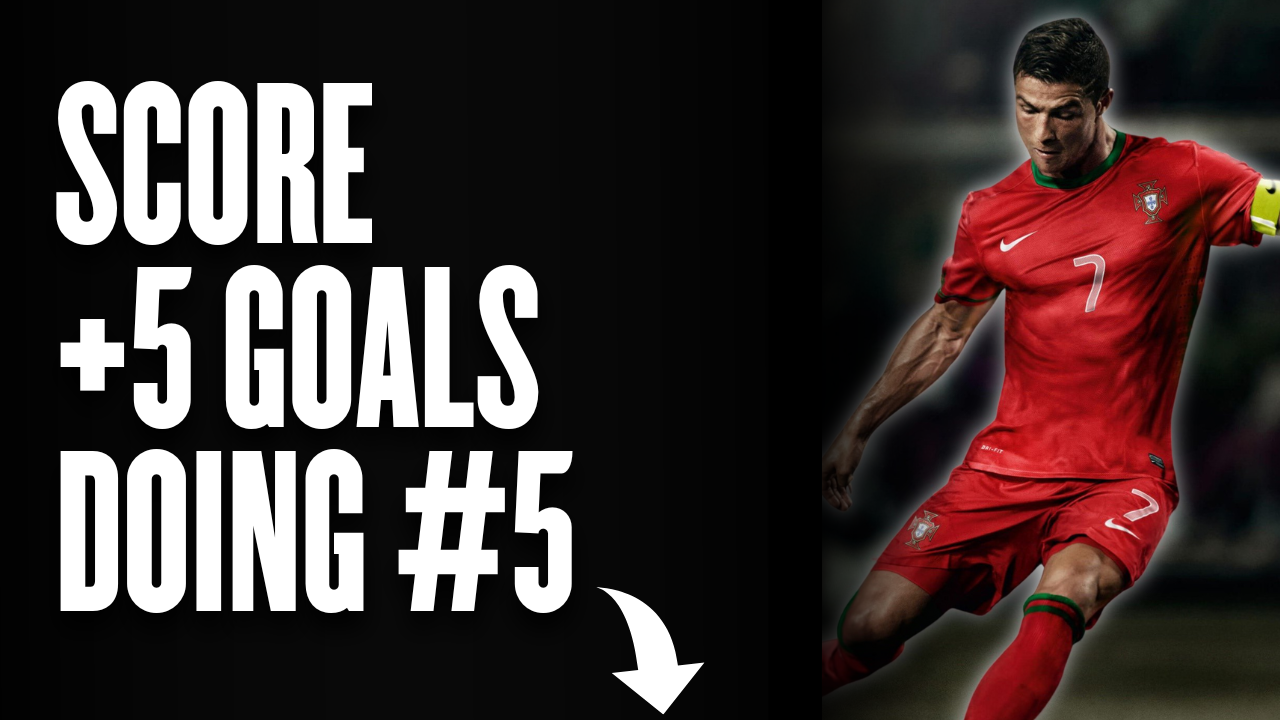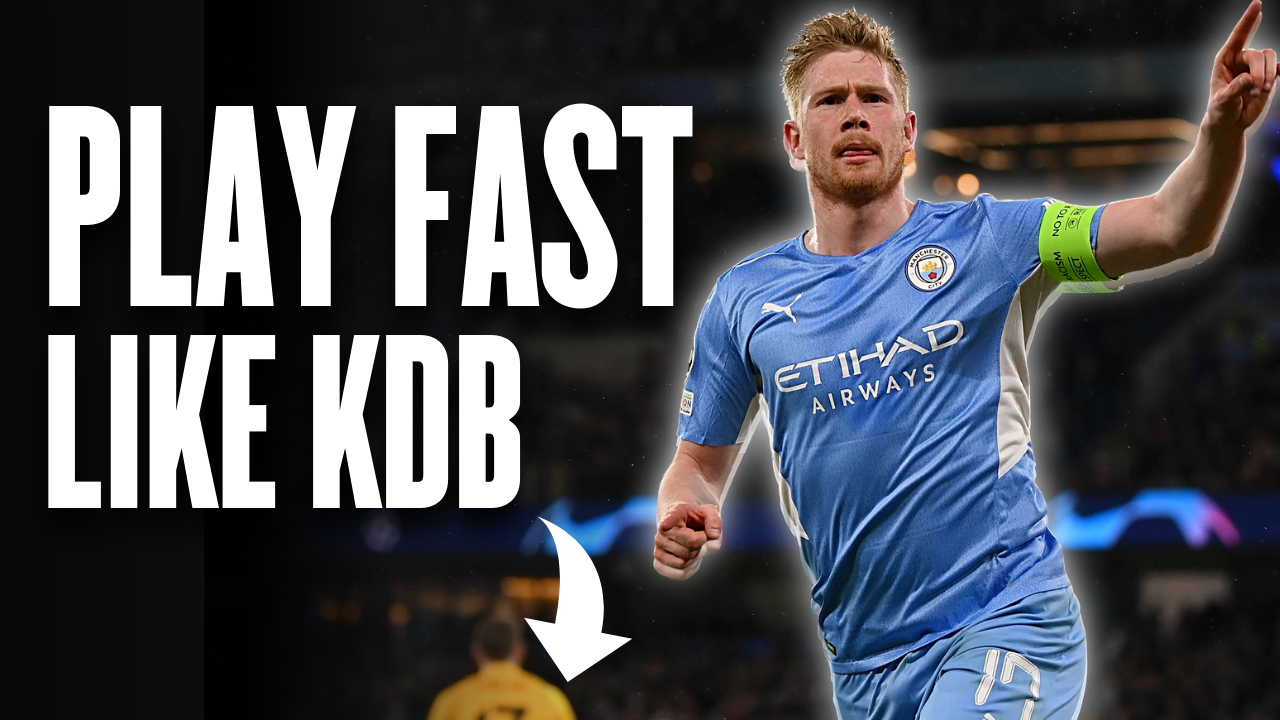
Did you ever have a coach that advised you to do passive/static stretching to either “warm-up better”, to “recover” or to increase your “flexibility”? This article goes over WHY your coach (or even you) was WRONG and HOW static stretching can HURT your PERFORMANCE.
The topic of static stretching for football performance is a battleground for all those involved in the game. Some people in the field consider their efficiency positive whilst others view it as a negative and counterproductive action. Confused, right?
This article will try to unravel the situation and make it clear that passive stretching is NOT something you, as footballers, should do. In fact, in the last decade, more and more studies shed light on the subject and help us realize how/why static stretching has a negative impact on our athletic performance. Apart from these issues, however, we will propose alternative practices which have been PROVEN to have a positive effect.
RELATED ARTICLE: How To Warm-Up Properly For A Football Match/Training Session
THE DEFINITION OF PASSIVE/STATIC STRETCHING
A sustained, low-intensity lengthening of soft tissue (e.g., muscle, tendon, or joint capsule), performed to increase the range of motion. The stretch force may be applied continuously for as short as 15 to 30 sec or as long as several hours. [3]
WHY IS STATIC STRETCHING HURTING MY PERFORMANCE?
There are various studies that prove the negative effect of passive stretching on the performance of an athlete who practices a sport that is based (from a physiological point of view) on speed and strength, as in our case football.
According to research, static stretching as part of a footballer’s warm-up is said to cause a significant reduction in acceleration speed (10m.) and generally the speed of a footballer (20m.) compared to dynamic stretching (Amiri-Khorasani, 2016) [1]. In another study conducted in 2008, it was shown that even a “no-stretching” group achieved better results in terms of speed (30m sprint) compared to passive stretching (Sayers, 2008) [2].
The reason behind these scientific findings is not 100% clear yet, however, in these two studies we mentioned, some speculation has been made about the causes of this significant reduction.
LENGTH-TENSION RELATIONSHIP
One has to do with the length-tension relationship of the muscle. According to this theory, every muscle has an “ideal” length at which it is able to produce maximal force. With static stretching, we essentially intervene this length-tension relationship.
The result is a less efficient length-tension relationship, which has been shown to reduce maximal muscle force (Cramer, 2005) [4]. This is why hyper flexibility (being overly flexible) is detrimental to a player’s performance (you’re not a gymnast buddy!).
LESS EFFICIENT NEUROMUSCULAR COOPERATION
The second possible cause has to do with factors related to the CNS (Central Nervous System). In this case, the sensitivity of our reflexes changes due to less muscle activation. Put in other words, passive stretching makes the connection and cooperation of the musculoskeletal and nervous system slower and less efficient (Cramer, 2005) [4].
WHAT ABOUT RECOVERY?
In addition to the above, it has been also shown that static stretching has little to no positive effect on the recovery of footballers (Pooley S, 2017) [5] as well as the reduction of injury risk.

*As an affiliate, I'm earning from qualifying purchases without any extra charges being placed on you.
An extremely important and subversive quote one would say, bearing in mind that a large percentage of coaches and players use static stretching as part of their usual recovery routine.
Fortunately, the data is slowly shedding light on the topic and there is a growing tendency to avoid passive stretching.
In summary, we would say that passive stretching has no place in the life of a footballer. Their inclusion in a warm-up or recovery session is useless and counterproductive. You should avoid them at all costs and only consider them in rare cases (e.g. long abstinence from the sport due to injury) to reestablish a good level of muscular flexibility again.
The truth hurts, doesn’t it?
So, before you start yelling at me, please keep reading. I will propose various methods to achieve the best results in terms of performance and recovery without static stretching.
RELATED: Basic Recovery Protocols For Football/Soccer Players
ALTERNATIVES FOR EACH CASE
Warm-Up
Amiri-Khorasani’s research, compared passive stretching to other forms and variations of stretching. The most efficient form of stretching was dynamic stretching, which had a positive effect on the performance.
Dynamic stretching is very close to a warm-up method called PAP (Post Activation Potentiation). The athlete dynamically performs a movement that is similar (from a biomechanical standpoint) to the movements he/she experiences in a training/competitive environment.
In addition, the athlete can convert the once passive stretches into dynamic ones. Instead of stretching the muscle holding a certain position for more than 15s, the athlete can constantly go back and forth into the stretch (gradually increasing the range of motion) for less than 10s.
Recovery
As mentioned above, passive stretching has little to do with repairing damaged muscle cells caused by exercise. In this case, we have to suggest other ways of recovery.
In terms of recovery directly after exercise, the footballer can run at a very relaxed pace for 2-3 minutes to progressively drop his heart rate. Subsequently, a “shaking” of the legs may possibly facilitate blood flow.

*As an affiliate, I'm earning from qualifying purchases without any extra charges being placed on you.
In general, recovery should be based on key factors such as diet and sleep. Consequently, you can use some mobility routines (mobility refers to joint ROM) in which again the passive stretches can be converted into dynamic ones and last less than 15s.
RELATED: Quality Sleep For Performance – This Is How To Achieve It
Inflexible Football/Soccer Players
We often see footballers who claim that they are not flexible. To this, we have two things to say.
#1 Footballers do NOT need to have high levels of flexibility – in fact, hyper flexibility MUST be avoided
#2 These players may not be mobile (mobility)
Flexibility is not a determining factor in football performance. An athlete who trains on an (almost) daily basis and follows a well-structured warm-up, is very likely to have enough flexibility to compete and stay healthy within the demands of the sport.
After all, we mentioned above that excessive flexibility disrupts the muscle’s length-tension relationship leading to detriments in performance. Therefore, you should NOT solely aim for flexibility.
You are not a gymnast! Your goal should be to increase mobility whilst maintaining a good level of muscular flexibility.
To achieve this, follow a well-structured warm-up as well as add some mobility-focused sessions during your training week. Finally, long off periods also play a major role. Your prolonged abstinence from the sport (e.g. lazy off-season) will not only have negative consequences on your performance but also on your mobility and flexibility.
CONCLUSION
As extreme as this all may sound to your ears, it is the truth. First off, I hope you cleared up the definition of static stretching in your head. I don’t think most of you that do passive stretching do it for longer than 10s, however, if you are doing it, know that this will have a negative impact both in the short but also in the long term. Knowing the scientific truth and still resisting it is totally counterproductive for your career.
You see, it’s those little details that we can’t feel or tell if they’re true or not. That’s where science can kick in and provide us with reasonable answers. At the end of the day, we always preach that every detail matters. If you truly want to achieve your fullest potential, sweat the DETAILS!
RELATED ARTICLES
- How To Warm-Up Properly For A Football Match/Training Session
- Injury Prevention – Myth or Reality? | Everything You Need To Know
- Reducing The Risk Of Injury In Football
- Muscle Cramps In Football – This Is How To Get Rid Of Them
- Shin Splints In Football – Everything You Need To Know
- Basic Recovery Protocols For Football/Soccer Players
- Neuroscience & Individual Football/Soccer Training | An Article By SwitchedOn Training




